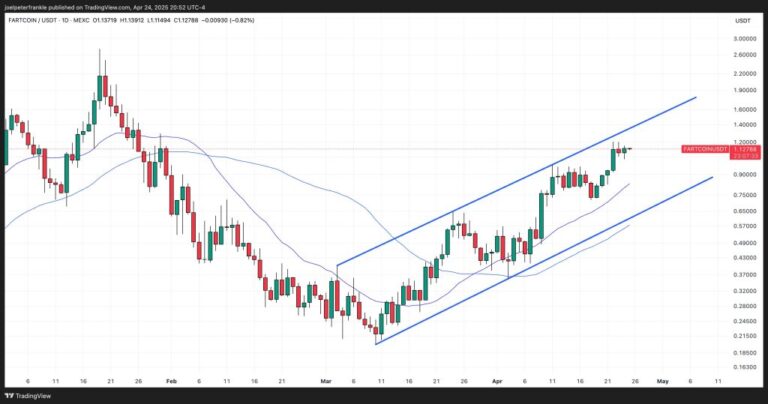Last updated:
 Why Trust Cryptonews
Why Trust Cryptonews
Ad Disclosure
We believe in full transparency with our readers. Some of our content includes affiliate links, and we may earn a commission through these partnerships. Read more

The year 2024 was monumental for Bitcoin (BTC). For the first time ever, Bitcoin surpassed $100,000 per coin.
This all-time high sparked renewed interest in crypto from both regulators and investors alike, prompting fresh conversations around Bitcoin DeFi.
As Bitcoin continued to gain traction, industry experts believed that decentralized finance (DeFi) use cases specific to BTC would escalate in the coming year.
Alexei Zamyatin, co-founder and CEO of Build on Bitcoin (BOB), told Cryptonews that the first wave of Bitcoin DeFi took place in 2024.
“Teams started building products last year consisting of emerging layer-2 (L2) scaling networks and DeFi protocols for Bitcoin,” Zamyatin said. “But this was just the beginning, as all of these products are finally going live in 2025.”
Bitcoin Liquid Staking and Liquidity Options
Zamyatin explained that the Bitcoin L2 Babylon will launch this year, creating safe and simple channels for users to participate in Bitcoin staking.
He noted that Bitcoin Secured Networks (BSN) will connect to the BOB L2 network, boosting the growth of Bitcoin liquid staking.
According to Zamyatin, the more BTC liquid staking tokens (LSTs) are used on chains like BOB, the more fees are generated on those chains, which then share a portion back with BTC stakers. This cycle potentially draws more BTC into staking.
LSTs representing claims on staked BTC already reached $5.5 billion in total value locked (TVL) by January 1, 2025, according to stakingrewards.com.
Enabling Liquidity Without Selling BTC
Granite is another Bitcoin DeFi project launching in 2025. Granite is an autonomous liquidity protocol built on the Stacks Bitcoin L2 blockchain.
The protocol allows borrowers to take stablecoin loans using Bitcoin as collateral, without exposure to counterparty or rehypothecation risk.
Rena Shah, COO of Trust Machines – a community of dedicated Bitcoin builders – told Cryptonews, that Granite enables Bitcoin holders to get liquidity without selling their Bitcoin.
“DeFi hasn’t touched Bitcoin meaningfully, but with the increased price volatility, more people are looking for options to leverage their Bitcoin without selling it,” Shah said. “Granite finally allows Bitcoin users to unlock their assets through a DeFi protocol.”
Given the maturing Bitcoin DeFi sector, Shah added that Bitcoin can potentially play the most important role in mainstream DeFi adoption in 2025.
“With over a trillion dollars in BTC held across different wallets, the potential of Bitcoin staking services will be one of the most sought after spaces of Bitcoin for new and expanding companies looking to provide access to Bitcoin DeFi,” she remarked.
Bitcoin Adoption in Institutional Lending Protocols
While loans and staking are important for retail investors, institutional DeFi lending platforms will incorporate Bitcoin derivatives as collateral this year.
Sidney Powell, CEO and Co-Founder of Maple Finance, told Cryptonews that Maple Finance is incorporating Lightning Bitcoin (LBTC) as collateral.
“This reflects growing confidence in Bitcoin’s high liquidity and low counterparty risk,” Powell said. “These advancements highlight Bitcoin’s evolving role as a cornerstone asset in decentralized lending, derivatives, and automated market maker (AMM) ecosystems.”
Powell further believes that adoption of Bitcoin in institutional lending protocols will continue to expand, with Bitcoin serving as collateral in decentralized undercollateralized loans.
“This trend reflects the broader integration of crypto into traditional finance, as institutions increasingly value blockchain’s transparency and efficiency,” he commented. “Additionally, new use cases like Bitcoin Ordinals are opening up innovative opportunities for asset tokenization and creative finance solutions linked to Bitcoin.”
Powell mentioned that use cases such as these further reflect how Bitcoin is being used beyond traditional narratives of store-of-value and payments.
“With Bitcoin increasingly incorporated into institutional DeFi lending markets, it is poised to establish itself as a premier collateral asset within decentralized financial ecosystems,” he said.
Improved UX Designs For Bitcoin DeFi Protocols
Beyond L2 solutions, projects are refining user experiences (UX) to make Bitcoin DeFi more accessible.
Matt Luongo, CEO of crypto venture production studio Thesis, revealed that Mezo – an economic layer for Bitcoin – prepared a UX upgrade focusing on a concept called “Cathedral and Bazaar.”
According to Luongo, the core focus of Mezo’s offering will be an intuitive process for Bitcoin borrowing.
This will allow users to collateralize their BTC and access a line of credit via mUSD, Mezo’s native stablecoin. This feature is currently live on the Mezo testnet.
“Bitcoin Layer 2 solutions like Mezo will improve scalability and unlock smart contract capabilities for Bitcoin-based DeFi applications,” Luongo added. “I expect many of the highly anticipated projects to be live on the market in 2025, giving a full end-to-end Bitcoin DeFi experience.”
Challenges for Bitcoin DeFi
While 2025 offers promise, potential hurdles may slow adoption. Powell explained that new tax regulations in the United States will likely influence Bitcoin DeFi this year, particularly for institutional participants.
“Stricter reporting requirements for crypto transactions could introduce added complexity for institutions leveraging Bitcoin in DeFi activities, such as using it as collateral in lending protocols or yield-generating strategies,” he remarked.
As a result, these changes may require more detailed transaction tracking and could trigger taxable events at multiple stages.
On the other hand, Powell believes that clearer tax policies could promote institutional adoption by alleviating regulatory uncertainty, which has long been a hurdle for large-scale market players.
“Greater transparency and compliance may encourage institutions to engage more confidently with Bitcoin DeFi platforms,” he said.
Retail investors may also be hesitant when it comes to earning yield on Bitcoin.
Deven Soni, CEO of Matador Network, told Cryptonews that “the biggest knock on Bitcoin yield historically has been the centralization risk of platforms like Celsius and FTX.”
However, Soni remarked that the rise of decentralized platforms that allow users to access DeFi/yield while holding custody of their crypto is something to look forward to this year.
















